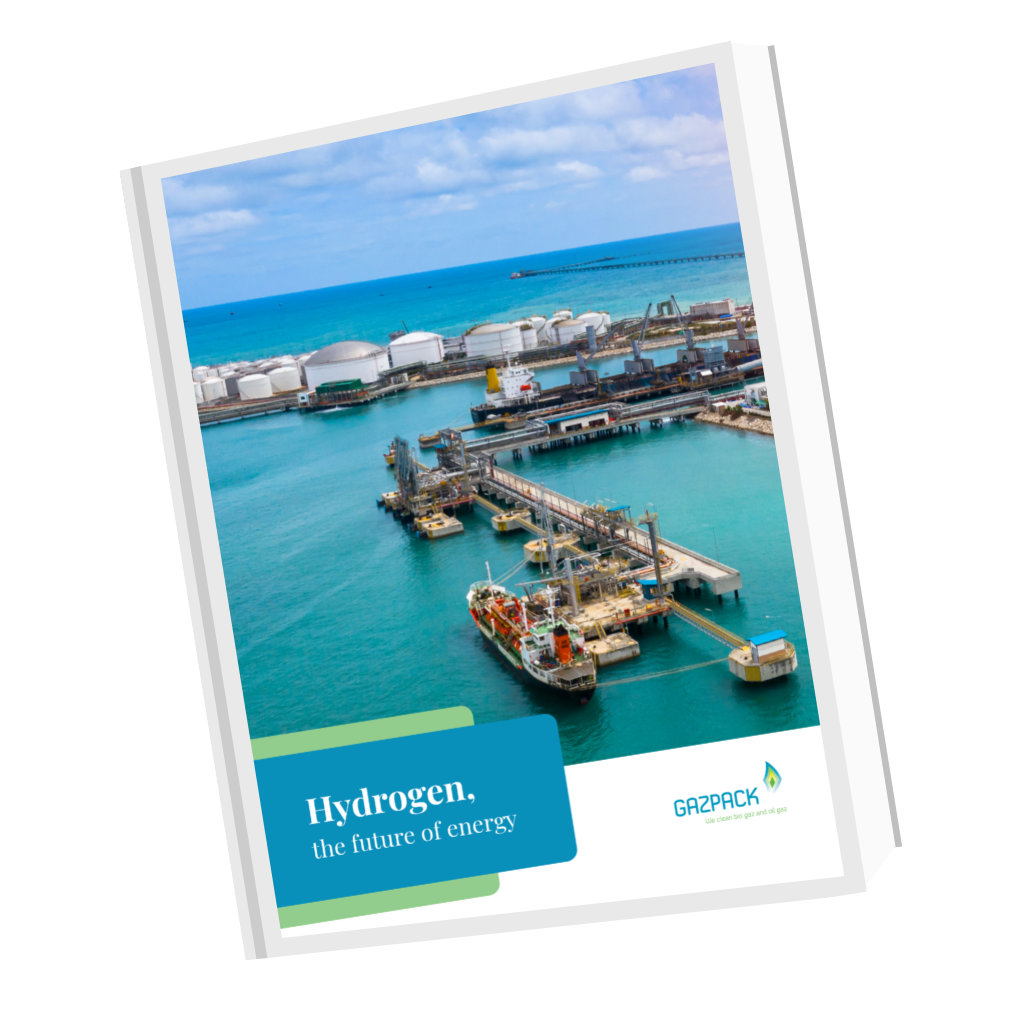Natural gas sweetening process
Looking to explore the world of biogas processing and handling solutions? Get instant access to our documents about biogas technology.
Gas Sweetening
Consumers always seek purity in what they buy. They want fresh, whole foods; all-natural fabrics; the cleanest water and solidly-built furniture. Health, sustainability longevity are prime motivators when you buy what you buy. The same principle holds for fuel and its chemical composition. The cleanest-burning, most efficient combustible energy is to be desired above substances rife with impurities and contaminants. Why? Transport and sale of such energy requires stability and conformity to industry regulations. So it is with natural gas and landfill gas. Unless the gas meets certain quality standards, it needs refinement. This additional processing is called gas sweetening.
What Is Heating Value?
When testing the heating value of natural gas, for example, those responsible are measuring the amount of heat released upon combustion, the density of energy often expressed in joules per kilogram (MJ/kg). Natural gas should fall within a range of 42 to 55 MJ/kg. For perspective, gasoline falls between 44 and 46 MJ/kg while enriched uranium reaches about 3,900 GJ/kg. So, obviously, it takes much less uranium to generate more heat. That said, natural gas holds superior heating value over gasoline. Why, then, does some natural gas fail to meet heating value standards?
What Makes Gas “Sour”?
Natural gas sweetening is needed when gas is evaluated as sour. Just like with food, when high concentrations of acid make for a sour taste, natural gas is soured by acidic elements like hydrogen sulfide (H2S). In fact, when H2S levels exceed four parts per million (ppm) by volume, natural gas will be neither shipped nor sold until that number is reduced. Not only is H2S toxic, it emits a nauseatingly foul odor. In addition, it acts corrosively on pipes and valves and can damage gauges and meters throughout the gas management infrastructure. Once the H2S is removed — along with CO2 — in the sour gas sweetening procedure, the natural gas is consumer-ready in terms of health, safety and heating value.
What Happens before Gas Sweetening?
The gas sweetening process is subject to what goes ahead of it in the processing sequence. Natural gas is made ready for use through the following stages:
Oil and Coal Removal
Conventional natural gas is found between layers of igneous and metamorphic rock. It is also located in the pores of sedimentary formations like shale and sandstone. Dissolved natural gas can be found within oil and coal deposits. The first order of business for this associated natural gas is to separate it from its crude oil host. Sometimes the two hydocarbons separate on their own when the deposits are uncovered and pressure is relieved. On other occasions, technology must intervene: a separator tank is employed to isolate the two fuel sources from one another by means of gravity.
Water Removal
Any water associated with the natural gas stream — either from hydraulic fracturing or pre-exisiting — needs to be removed. Most of the time this is not complex but if vapor is integrated with the gas than dehydration becomes necessary. This is accomplished through absorption — where a dehydrating agent like Glycol is applied — or adsorption, drawing vapor to the surface and collecting the moisture there.
Segregation of Natural Gas Liquids
Natural gas collected from wells often contains natural gas liquids (NGLs). These have economic value apart from the gas itself and are ordinarily separated through absorption (as with water) or through a cryogenic expander. The lighter the NGLs, the more difficult to remove them through absorption. Alternatively, cryogenic expansion calls for external refrigerants to lower the temperature to minus 85 degrees Celsius. Combined with an expansion turbine, these agents cause condensation of the lighter NGLs so they can be captured and removed. This cleans and purifies the natural gas stream.
It is at this point that sulfur and carbon dioxide are dealt with by the gas sweetening process.
How Is Sour Gas Sweetened?
This procedure is very similar to the absorption techniques employed for dehydration and NGL separation. With H2S neutralization, however, an amine solution — amine being an ammonia derivative — is used in an overwhelming majority of natural gas sweetening process cases. At the sweetening plant, sour gas is moved through a gas sweetening unit, or tower, containing amine solution. The amine attracts and absorbs the sulfur molecules, liberating the gas from this poisonous, damaging compound, leaving you with sweet natural gas. Best of all, the amine solution can be recycled and used over again. Worth noting, at any rate, is that in some cases solid dessicants, such as iron sponges, are also effective in sulfur removal.
Why Is Sweetened Gas Important for Transportation?
Natural gas must travel from where it is found to where it is consumed. Most of this occurs through pipelines. Gathering pipelines take it from its origination point to the processing facility. This leg of the journey involves specialized pipes that are more resistant against the corrosive elements present in sour gas. Interstate pipelines move the gas over long distances, in some cases across the continent. Transmission pipes bring sweet gas the rest of the way to points of consumption. These last two phases of transport involve heavier pipe with larger diameters. These are vulnerable to the damage of sour gas hence require sweet gas to remain sustainable and intact.




